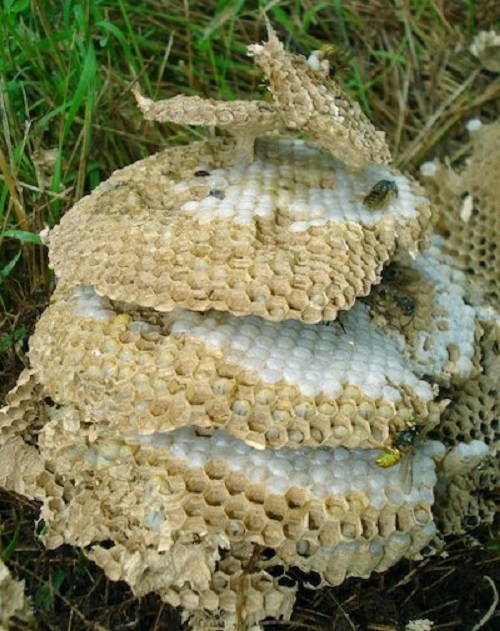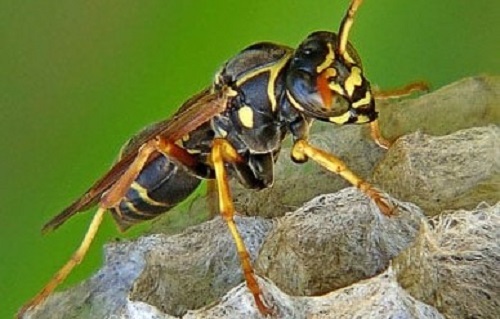Unwelcome wasps everywhere in Central
Anna Robb
20 January 2023, 5:00 PM
 If you get a wasp sting get an ice pack on the sting site straight away to reduce pain and swelling
If you get a wasp sting get an ice pack on the sting site straight away to reduce pain and swellingIf you’ve had a picnic recently or a barbecue have wasps rushed to the food or sweet drinks?
Locals have commented on social media that wasps are currently especially bad all across Central - spoiling the enjoyment of dining outdoors during summer, and putting people off having picnics.
Cromwell based Mountain View Cleaning and Pest Control director Steve Churchill said they are fielding more calls about wasps earlier on than in previous summers.
“Over the last four to five years there has been a notable increase in wasp activity in our region. Our mild winters are to blame. The deep hard frosts are not occurring so the wasp colonies are having a more successful survival rate.
“Wasps are attracted to a lot of sweet smelling sugar based products, unfortunately Central Otago being a fruit and grape producing region is a natural attractant and living environment for [them].”
Steve said they are attending more than ten wasp jobs per week in Central, Wānaka and Queenstown.
Identification of the wasp species is crucial as there are native wasps (not a problem), and honeybees and bumblebees (important pollinators), along with five other introduced wasp species - these are the troublemakers.
Steve said wasps “look nasty” whereas bees don’t.
“They have a more menacing and aggressive appearance…predominantly [they have] a bright yellow main body with either black stripes or black dots.
“Conversely a honey bee has a much softer appearance, more of a light tan and furry texture. Honey bees tend to be in larger volumes where a wasp colony can be anywhere from 10 wasps to 300-400 for a large colony.
“The quickest way to get help these days is to google wasp or honey bee images.”
The pests are German and common wasps, and three species of paper wasps.
Steve said the German wasp is seriously nasty and will sting when disturbed.
“They build their nests in schist banks, or in behind cavities in walls or garden edges.
“In the past, we’ve attended a place that had a one and a half metre tall and one metre wide German wasp nest under the house.”
Introduced wasps are one of the most damaging insect pests in New Zealand.
They harm our insects in beech forests as they eat massive amounts of honeydew (an important food for native birds, bats, lizards and insects). Wasps can also kill newly hatched birds.
Wasps are a nuisance for people: the venom from a sting can cause an allergic reaction for some as well as pain at the sting site.
A 2015 study estimated that introduced wasps cost New Zealand’s economy more than $130M a year, with impacts on farming, horticulture, bee keeping, health, wasp-related traffic accidents and unrealised honey production.
The Department of Conservation (DOC) website has information on different approaches to wasp control, depending on the size and location of the problem.
Vespex is a meat-based protein bait that contains an insecticide (fipronil) targeted at wasps but is only effective at certain times of the year (usually late in summer) when wasps are eating protein.
It was developed in conjunction with a Nelson based company (Merchento) but to use it you need to become an approved user (and sit an online quiz).
To investigate a possible nest near your home or in your garden, the best time is at dawn or dusk and you’ll need to follow the flight path to locate the nest.
Then, after dark once the wasps have stopped flying in and out, you can use a store bought insecticide (often a powder) at the nest entrance.
The worker wasps will carry the substance into the nest and the colony usually dies within a day.
Advice is to leave the nest where it is, as if you attempt to remove or knock it down without adequate treatment a pheromone trail is left behind which attracts wasps back to the site, where they will begin to rebuild the nest.

A common wasp with its black and yellow colouration; a widespread pest species has been here since the 1970s

The German wasp nest can get as big as a soccer ball and is usually grey in colour (a common wasp nest is brown)

The Asian paper wasp builds its nest from chewed up woody material, the nests range in size from that of a golf ball to a cricket ball
If you suspect you have multiple wasp nests, seek the advice of a specialist pest management firm. They are capable of stinging multiple times if disturbed.
To relieve a sting, the Ministry of Health recommends washing the area with soap and cold water, and applying an ice pack for 15 minutes to help relieve pain and swelling.
Topical creams, antihistamines and paracetamol can be useful in controlling pain, swelling and itchiness. Inflammation may also be managed with use of a hydrocortisone cream.
The National Poisons Centre is available anytime on 0800 764 766 for advice on first aid and treatment of stings.
Advertisement
NEWS
WHAT'S ON
SHOP ONLINE WITH LOCALS






